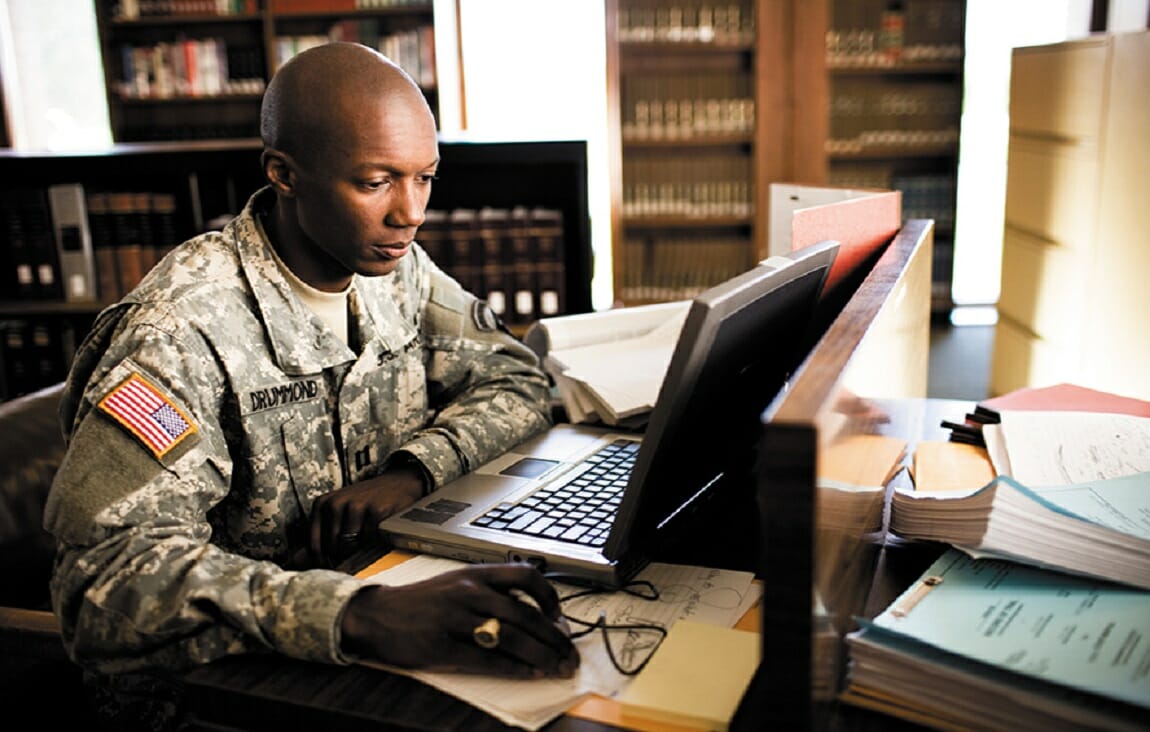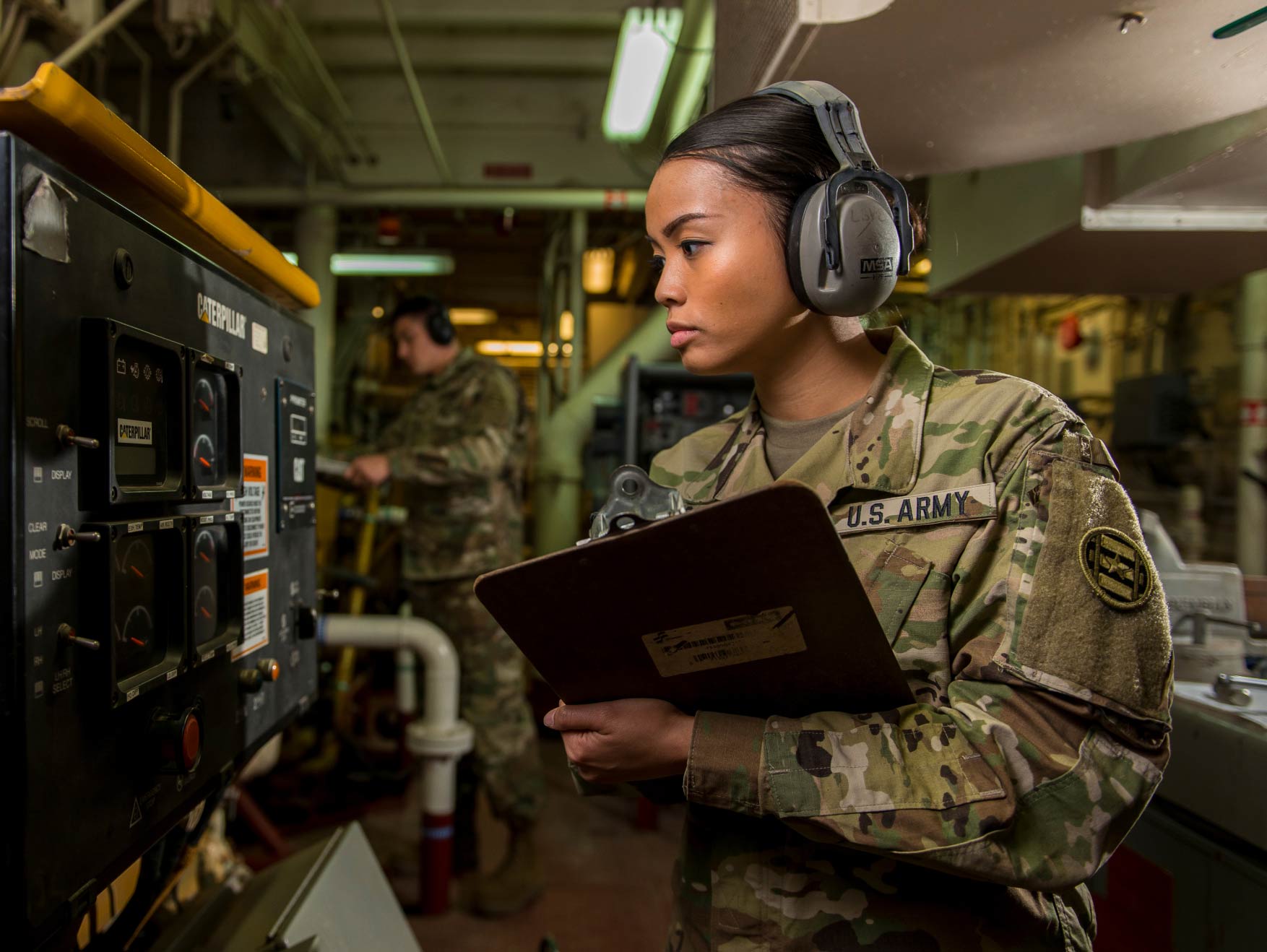The ASVAB math domain consists of 2 subtests: Mathematics Knowledge encompasses concepts involving high school maths, such as algebra and geometry and Arithmetic Reasoning asks you to solve mathematical word problems. Although it is considered one of the most tricky domains, the candidates will not allowed to use any material or calculator during the tests. As a result, understanding the key formulas will help them get a good foundation and preparation to solve every math question. Follow our guide that covers the most imperative formulas across various mathematical concepts that help you increase your confidence and scores on test day.
ASVAB Math formulas chart
The following formulas encompass a wide range of arithmetic to advanced concepts and allow solving problems concerning arithmetic, algebra, geometry, and more. Take a look at these charts below, which will give you a quick reference to most of the ASVAB math formulas you need to know and make it even easier to understand how numbers, shapes, and equations all relate.
Fractions
Fractions are an important way of describing part of something. Note the operations of addition subtraction, multiplication, and division of fractions and learn to use them to solve problems.
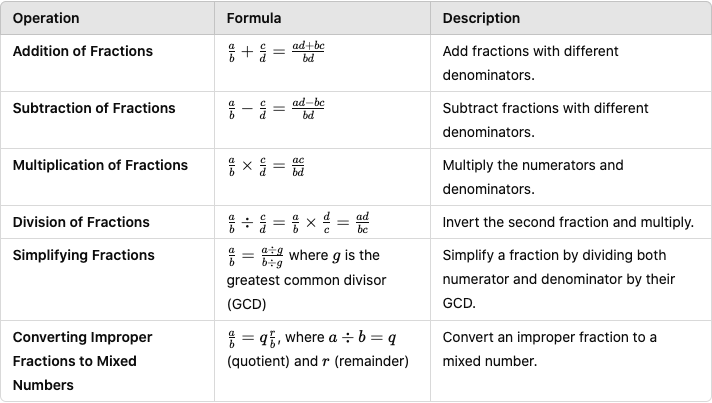
Percents
Percent means a way to express a number as the part of one hundred. It is also applied to compare quantities, calculate increases or decreases, and solve the problems of real life such as discounts, interest rates, and data interpretation. For ASVAB math, percent formulas should be known very well as many questions regarding percentages are included in each context.
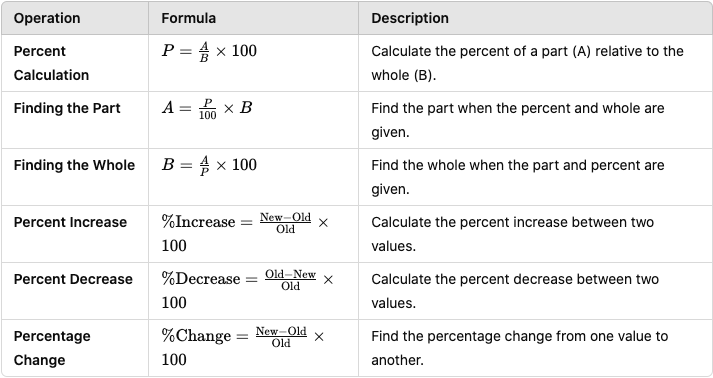
Exponents
The exponents are a way of describing the repeated multiplication of the same number. The number that is multiplied is called the base, while the exponent shows how many times that base is multiplied by itself. Mastery of the rules of exponents will help solve your problems concerning powers, roots, and scientific notation on the ASVAB. These formulae will enable you to simplify cumbersome-looking expressions and allow for swift calculations.
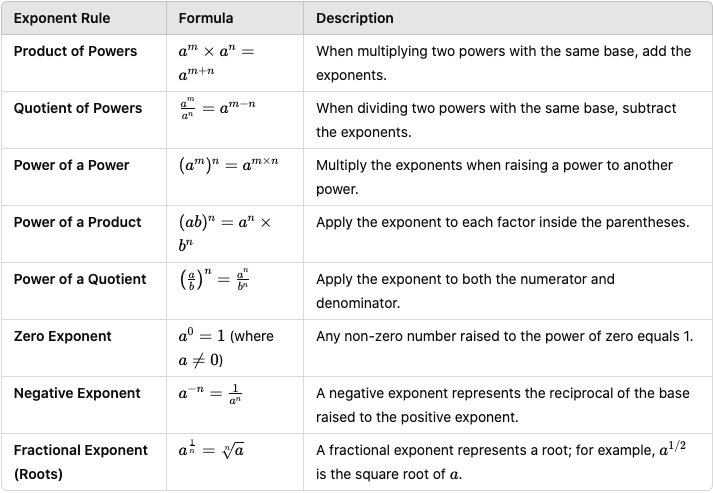
Factorials
Basically, the factorial formula is used to calculate the product of all positive integers that range from 1 up to a given number. Factorials are used in common math operations involving probability, combinatorics, and permutations. The factorial of a number is represented by n!, which helps solve the problems concerned with counting arrangements and sequences on the ASVAB. A good grasp of factorials will go a long way in enabling you to answer a number of questions without much hassle.
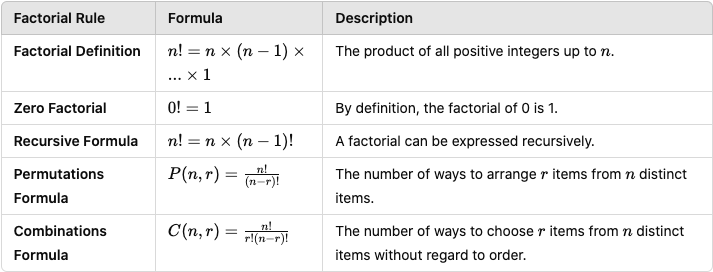
Logarithms
Logarithms are the opposite of exponents and are defined as the power to which a base number must be raised to obtain a specific value. Logarithms will help answer ASVAB questions that involve growth and decay. Logarithms can also be utilized to make complex equations much simpler. Logarithms have a variety of applications, and being familiar with how to manipulate logarithms quickly and easily will help solve questions relating to large numbers and their powers.
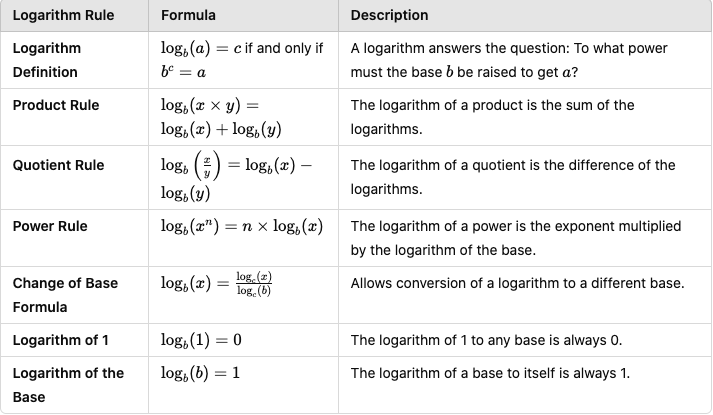
Statistics
Statistics is considered that branch of mathematics that involves collecting, analyzing, and drawing conclusions derived from data. It is important to know, for the ASVAB, general concepts such as mean, median, mode, and range. These concepts summarize data to find patterns; therefore, useful in solving problems that involve a set of numbers. Mastering these formulas will assist you in answering questions related to data analysis and probability on the ASVAB.
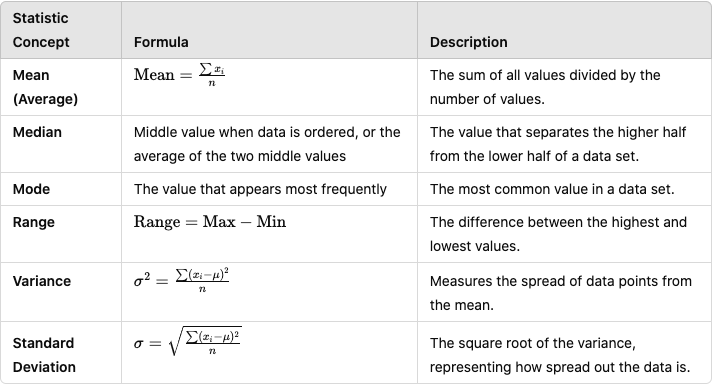
Algebra
Algebra involves the use of symbols and letters that correspond to numbers in equations and formulas. It is the basis for solving any problem that involves variables and finding unknown values. Some key concepts used in algebra on the ASVAB include solving equations, manipulating expressions, and understanding the relationships between variables. Mastering the formula of algebra will determine success within various mathematics questions.
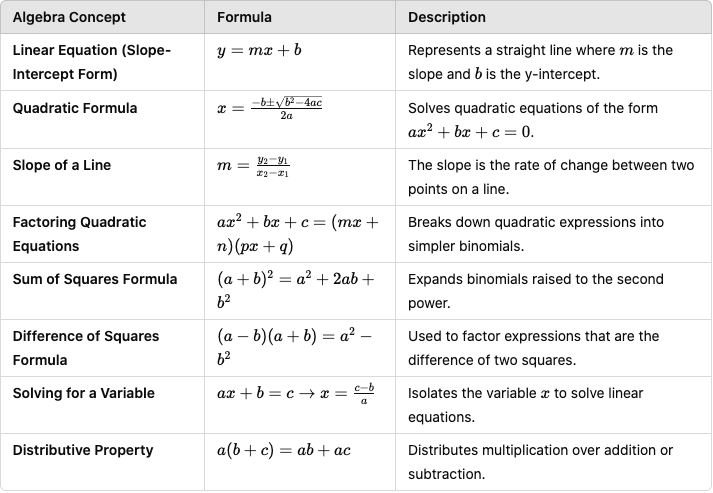
Geometry
Geometry deals with shapes, sizes, and properties of space. It was a critical component when understanding spatial relationships and calculating measurements on the ASVAB. Geometry concepts are frequently applied to real-world scenarios, like architecture and engineering. Familiarity with key geometric formulas aids in effectively solving problems related to angles, areas, volumes, and distances.
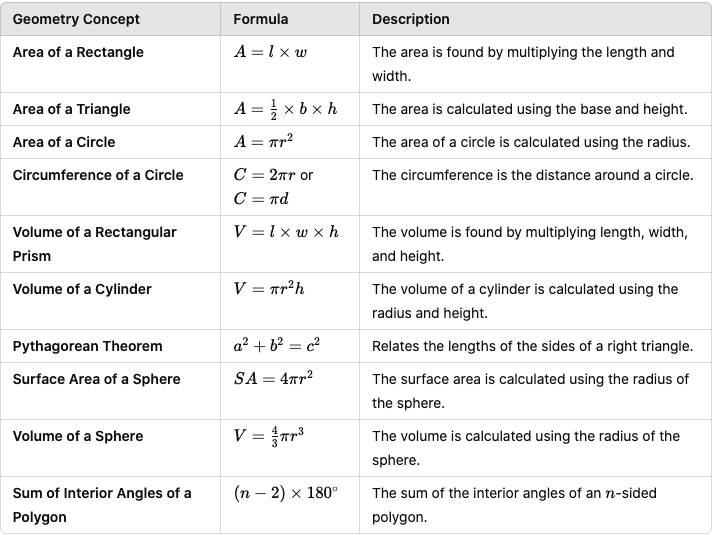
How to study ASVAB Math formulas?
ASVAB math formulas are better when practiced, but you need a strategy for studying them. Take a look at these tips and tricks that will guide you in your studies:
- Formula sheet: Jot down important formulas for reference and review daily.
- Break each formula down: Not just how, but know why the formula works; it will enable the problem-solving mechanism within you.
- Practice regularly: Work out formulas by taking practice tests and exercises that will lead to applying formulas in different types of questions.
- Flashcards: Write down formulas on flashcards to quiz yourself frequently for quick recall.
- Group formulas: Learn formulas that all have something in common like area and volume formulas of similar shapes so you know the differences and the relationships.
- Practice weak areas: Give extra attention to formulas that you struggle with the most. Practice those more than any other.
- Integrate formulas into real-life situations: The more you can relate math to real-life situations, the more sense it will make to you, and the better you will retain the information.
By incorporating these methods of study into your regular progress, you have mastered the math formulas needed for success on the ASVAB and will be improving test performance.
Our ASVAB Prep provides both Mathematics Knowledge and Arithmetic Reasoning practice tests to help you apply these formula theories into practice, then you prepare for the real Math test comprehensively.
Take the Mathematics Knowledge practice test
Take the Arithmetic Reasoning practice test
FAQs
1. Is ASVAB Math hard?
ASVAB math is difficult for some and somewhat easy for others; with practice and familiarity with the formulas, most find it manageable. Access our post on Is the ASVAB hard? to have a clearer answer about the ASVAB difficulty in general.
2. What is the distance formula for the ASVAB?
The distance formula is given by d=rt, where d is distance, r is rate (speed), and t is time.
3. Can you fail Math and still pass ASVAB?
No, the AFQT score is the sum of your scores from the two math sections and the two verbal sections. The qualifying score for the army is 31 or more. More information about the ASVAB score is available for you to be more well-prepared.
Final thoughts
Mastering these essential ASVAB math formulas will go a long way in helping your performance in these tests. Practice the problems and know how to apply each formula to ensure the best possible outcome in the ASVAB math test. Keep revising, practicing, and applying these formulas to assure your success on test day! Good luck on your ASVAB path!


